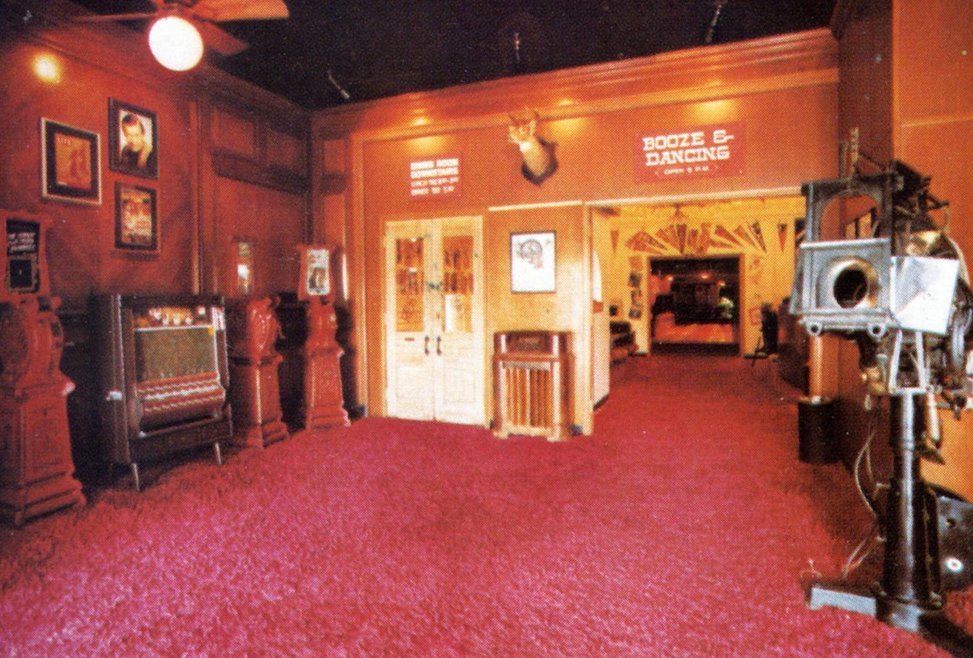
It didn’t live long. Its street presence was minimal and its food unremarkable. Nonetheless, The Last Moving Picture Company deserves a place in the pantheon of Cleveland restaurants.
Located at 1365 Euclid Avenue in Playhouse Square, “LMPC” was founded by Hamilton F. Biggar and several chums from Hawken School. Biggar (1947-2014) had launched the Mad Hatter dance club on East 18th Street, two years earlier, in 1971. He was the nephew of Jim Biggar, CEO of Nestle USA and Stouffer’s, so perhaps food was in Ham’s blood. In any event, the first-time restaurateur opened his bistro in a former Stouffer’s restaurant in the spring of 1973—four years after the State, Ohio, and Palace Theaters closed and five years after the Allen Theater went dark. Although the theaters had escaped demolition and Jacques Brel would soon open in the State Theater lobby, the district was largely comatose. But amidst all the emptiness, several interesting eateries opened at around the same time. The Elegant Hog was a pubby, wood-paneled hotspot. The Rusty Scupper, with its two-story atrium, was so festooned with ficus, philodendron and ferns that one might assume houseplants were on the menu. And Boukair's, a staple at 1520 Euclid, became the New York Steak House months before LMPC opened and was replaced within a year by the Parthenon. Thus, The Last Moving Picture Company was part of an admirable yet doomed movement to breathe new life into an area that was more “Playhouse Bare” than Playhouse Square. And people responded: Through the early and mid 1970s, suburbanites and business travelers flooded in.
In addition to its pioneer spirit, The Last Moving Picture Company should be recognized for a generous and maybe illegal “pour your own” policy. In effect, a restaurant patron ordering a mixed drink (say a Bloody Mary) would have a large ice-filled glass, a small carafe of Bloody Mary mix, and (yes folks) a bottle of vodka delivered to his table. Armed with these ingredients, the happy recipient was free to be his own mixologist. This, of course, was a recipe for economic and dipsomaniacal disaster since customers quickly discovered that they could forego the Bloody Mary mix entirely and pour themselves an eight-ounce, ultra-dry vodka martini for the price of a single drink. Neither the policy nor the customers’ livers lasted long.
But moving pictures are what made The Last Moving Picture Company truly unique. Cut into every wall of the restaurant was a movie screen, behind which were small closets containing an 8-millimeter projector and stacks of old films. Rushing frantically from closet to closet to change reels, a full-time projectionist would treat patrons to endless (and soundless) streams of Buster Keaton, Charlie Chaplin, Mae West and Harold Lloyd . . . sort of a sports bar for movies. Accordingly, the restaurant’s menu was a Hollywood smorgasbord: Fatty Arbuckle was a hamburger. Boris Karlov was a Polish sausage. Joan Crawford was a sirloin. Marilyn Monroe was (what else?) a cheesecake. Complementing the films and filets, the restaurant and upstairs bar featured countless kitschy accoutrements: a nickelodeon, a ticket booth cashier’s station, an old film projector repurposed to dispense beer. Music was piped through old floor radios. Placemats were laminated movie cards.
The Last Moving Picture Company did a door-busting business until, well, it didn’t. By the late 1970s most of the district’s restaurants had closed, including The Last Moving Picture Company. And while the eateries didn’t survive, Playhouse Square certainly did. In 1977 the Playhouse Square Foundation obtained long-term leases for the Palace, State, and Ohio Theaters. By 1991 each venue had reopened and, in the aggregate, were entertaining some 750,000 patrons a year. Ham Biggar—a champion squash player—went on to launch the 13th Street Racquet Club in a warehouse at Dodge Court and East 13th Street. He must have cringed when, just around the corner, his cinema-centric eatery became a McDonald’s. But 40 years hence, Biggar would surely be gratified to see that the golden arches are gone and that the curtain has risen on new generation of Playhouse Square theaters and bistros.
Images





